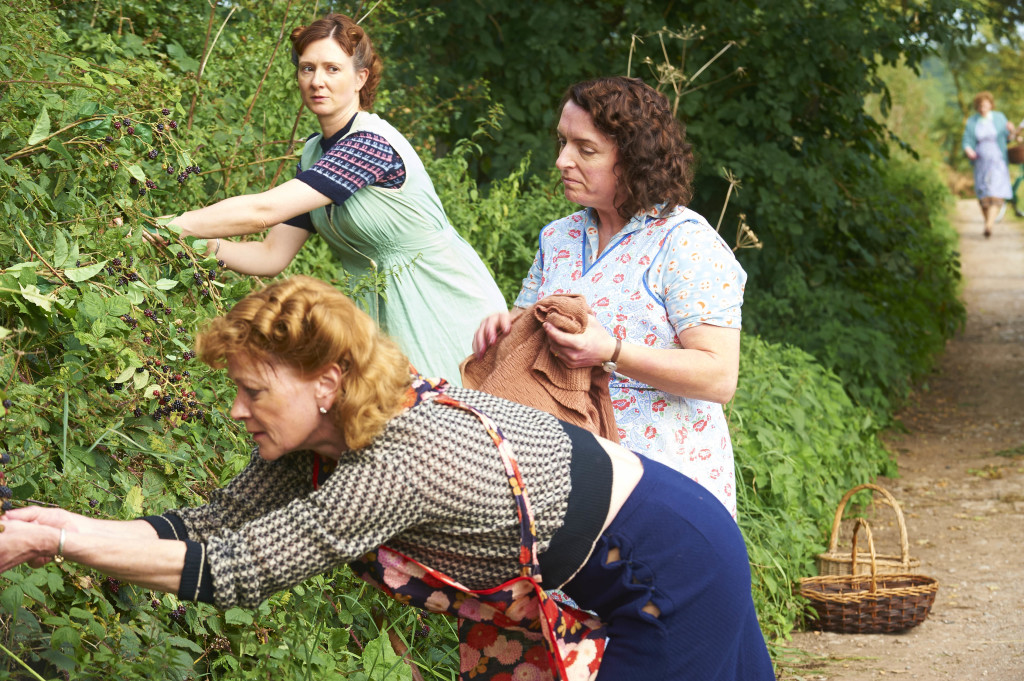
By the end of the Second World War the British government had such minute control over every aspect of people’s lives that it governed the length of men’s socks and the amount of metal and rubber in women’s corsets. Even trouser turn-ups were banned and only six designs of underwear for women were permitted. Food was equally carefully monitored and rationed. Everything had been streamlined and controlled to help towards the war effort. The novelist Barbara Cartland was heard to lament that love was about the only thing left unrationed by 1945.

In November 1939, however, most things were still available and all rationing, apart from petrol which had been introduced in September, was in the future. With nearly one third of the population entitled to wear uniform of one type or another, manufacturing had to turn its considerable energies to mass-producing tunics, battle-dress, bib-and-braces or nurses’ uniforms. The government recognised that controls would be necessary and not just for food but also civil industry and trade. Some planning had taken place in the Board of Trade, but this was mainly to control the import/export market. The immediate impact on civilian trade was major price rises. Unsurprisingly, the demand for goods such as sandbags, black-out material and torches or flashlights rose suddenly and the prices followed. Profiteering became a major issue and was addressed in November through the Prices of Goods Act 1939, which ‘limited the profit earned per unit of a commodity to the amount received at the end of August 1939’. The Act had only limited success, which meant that profiteering continued and inflation, much feared by the government, was an ever present concern. Clothes were particularly susceptible to substantial price rises. A woman told a journalist early in the war that she had gone into a shop to buy gloves and said to the assistant that she wanted to get them now because she feared the new stock would be dearer. To which the assistant replied: ‘Bless you! You’re too late. We’ve put up the prices of the old stock already.’
The editors of women’s magazines tried to encourage practical solutions such as the wearing of housecoats to protect skirts and blouses. Pat Simms (Claire Rushbrook), for example, and Erica Campbell (Frances Grey), wear housecoats or aprons over their dresses. We might look at these garments today and smile at the memory of own grandmothers or aunts wearing them, but even the high-end fashion magazine Vogue considered them important enough to include designs for housecoats in the winter pattern book of 1939.

Controls of all sorts were introduced in the early months of the war. Market stalls were carefully monitored and once sugar rationing was introduced in January 1940 the Women’s Institute was no longer able to sell cakes and biscuits at their country markets. The WI found the bureaucracy of the Second World War a severe trial and one of the reasons my book was titled Jambusters in the UK was because the WI expended a great deal of energy busting bureaucratic log-jams in order to keep the countryside going. One irritated member wrote in her diary: ‘We went to Coventry this morning and I spent 20 minutes in the Food Controller’s Office getting a permit for butter and sugar for the Women’s Institute teas.’
The WI was nothing if not resourceful and positive. The government recognised the value of a huge voluntary body of women who could be marshalled with just one telephone call to their General Secretary, Miss Farrer, and it made sure that the WI was involved in the outset on food production. WI members were invited to sit on county agricultural committees and to encourage their villages to put aside as much land as possible to grow fruit and vegetables. In episode 2 of Home Fires some of the drama hinges on the determination of Mrs Barden (Samantha Bond), the WI president, to plough up the cricket pitch for vegetables. As seen, this was not popular with the men. This is something that happened throughout Britain. My own grandfather returned from the war to see that his beloved tennis court had been dug up for growing potatoes.
The autumn of 1939 brought great change and a strange sense of a new normality. As you watch episode three you will sense the heightened state of tension and emotion that the war rendered within the families in Great Paxford. It affected everyone in different ways: fear, anger, love, danger, separation but the Great Paxford WI offers its members a solid backbone as the country finds its way during the so-called Phoney War of 1939-40. One of the most successful schemes run by the WI during the war was the ‘Letter Friendship’ scheme. It was conceived in June 1939 at the meeting in London of the ACWW, Associated Country Women Worldwide, at which representatives from women’s movements from all over the world were present. Over 200 Canadian friendships were established and resulted in an exchange of letters so each could understand the other’s situation better. One correspondent wrote: ‘I listen a great deal to the radio but radio doesn’t tell me what the women do at home.’
Women needed each other as never before. The travel writer Rosita Forbes wrote in the magazine Women’s Own: ‘In these hard times, when the utmost is required of everyone, the most important virtues are courage and kindliness. Women’s courage is the valour of endurance, of standing up to endless small difficulties, of putting up with things and making things do. When you are sick and tired and frightened of the future as well, and you go on working without making a fuss, then you are quite as brave as the first person who flew across the Atlantic.’


Home Fires by Julie Summers, published by Penguin USA, tells the true story of the wartime WI which inspired the drama series HOME FIRES: Fashion on the Ration by Julie Summers was published in March 2015.









